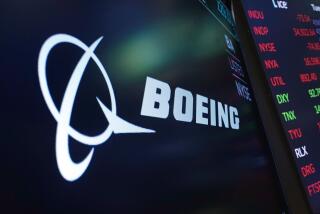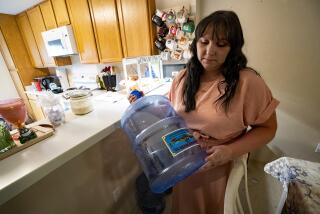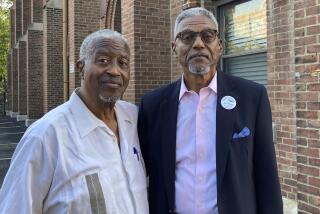Retrial to Begin in Lockheed Workers’ Lawsuit Against Chemical Firms : Courts: Employees on Stealth fighter project say they were not adequately warned of potential dangers from exposure.
- Share via
The Stealth fighter was a terror to the Iraqis in the Gulf War, but since the days when it was the Pentagon’s biggest secret it has been shadowed by a non-military question: Did working on its high-tech body ruin workers’ health?
Another round in the legal battle over that question begins this week when attorneys representing more than 600 former Lockheed Corp. workers and the nearly two dozen chemical companies they are suing return to court in the retrial of a chemical-exposure lawsuit.
Attorneys for both sides spent last week in Los Angeles Superior Court selecting a jury. Opening arguments are scheduled to begin Tuesday.
A judge declared a mistrial in the first round last April after jurors failed to reach a verdict following an eight-month trial, which included the longest jury deliberations in a civil case in U.S. history.
The workers are seeking unspecified damages from the companies that allegedly supplied chemicals to make the Stealth fighter and other military aircraft at the Lockheed facility in Burbank during the 1970s and ‘80s.
The workers originally sued Lockheed as well, but after the company settled for $33 million, the workers proceeded to trial against the chemical companies in August, 1992.
The trial involved 14 workers, chosen as “pilot” plaintiffs from a group of 624 current and former Lockheed employees.
The workers filed damage claims alleging that the chemical companies failed to provide adequate warnings about the dangers of their products, causing them to suffer injuries ranging from skin rashes to cancer.
Lawyers for both sides hoped that verdicts in the first case would lead to settlements of the other claims, holding future trials to a minimum.
After 12 weeks of tense deliberations in the extremely complex case, however, jurors failed to reach a verdict, frustrating attorneys on both sides and Superior Court Judge Melvin B. Grover, who presided over the case.
In a two-pronged defense for the upcoming case, lawyers for the chemical firms said last week there is no proof the workers were injured by chemical exposure. In any case, they say, the companies supplied Lockheed officials with adequate warnings.
“I believe every single defendant and certainly my clients . . . always provided adequate warning labels,” said Nicholas W. Hornberger, an attorney representing five of the companies.
Hornberger said his clients maintain that Lockheed failed to pass the warnings on to their employees. He noted that workers testified during the first trial that they never saw the material safety data sheets, which the companies supply to their customers advising them on the risks of their products and providing instructions on their use.
Thomas V. Girardi, lead attorney representing the workers, could not be reached for comment.
The pilot workers who were plaintiffs in the first trial will be involved in the upcoming trial, a defense attorney said.
As in the first trial, attorneys for the workers must establish that their clients were injured by chemical exposure, that the chemical companies provided inadequate warnings for their products and their failure to warn of the risks caused or contributed to the workers’ injuries.
To simplify matters, Superior Court Judge Richard C. Hubbell, who will hear the upcoming case, split the second trial into two phases to limit the number of issues the jury will have to consider.
During the first phase, jurors will determine which chemicals were at the Lockheed facility in Burbank and whether warnings supplied by the chemical companies in the form of labels and material safety data sheets were adequate, said Mark E. Fingerman, an attorney representing the Henkel Corp. If the jury finds the warnings were inadequate, then it must determine whether any of the companies acted with fraud, oppression or malice in supplying the warnings.
Should the trial proceed to the second phase, attorneys for the workers must establish that their clients were injured, that the injuries resulted from chemical exposure and that inadequate warnings caused the exposure, Fingerman said. The jury also will determine any general and punitive damages during the second phase.
Laurence F. Janssen, an attorney for some of the plaintiffs, including Exxon, Shell, Unocal and Dupont, said he expects the first phase of the trial to last until mid-April and the second phase, if needed, to take another four to six weeks.
Fingerman, attorney for Henkel Corp., which produced an anti-corrosive chemical used in treating aircraft components, said there is no evidence that any of the 14 pilot plaintiffs were injured as a result of their work at Lockheed.
Chemical suppliers would not be liable for such injuries anyway, according to Fingerman, who said that Lockheed had the responsibility and know-how to protect its workers.
“Lockheed is one of the most sophisticated users of chemicals in the world,” he said.
Times staff writer Myron Levin contributed to this story.
More to Read
Inside the business of entertainment
The Wide Shot brings you news, analysis and insights on everything from streaming wars to production — and what it all means for the future.
You may occasionally receive promotional content from the Los Angeles Times.










